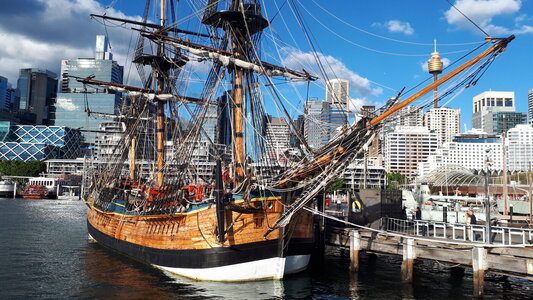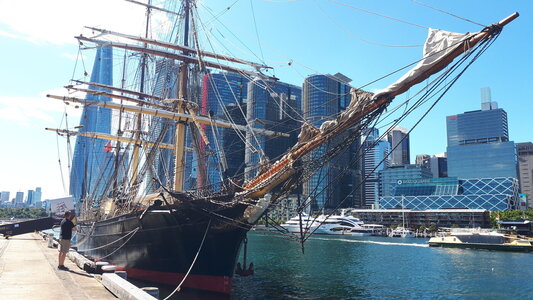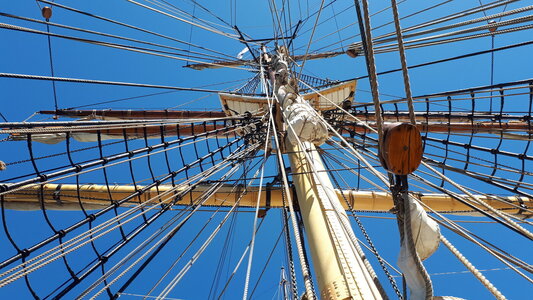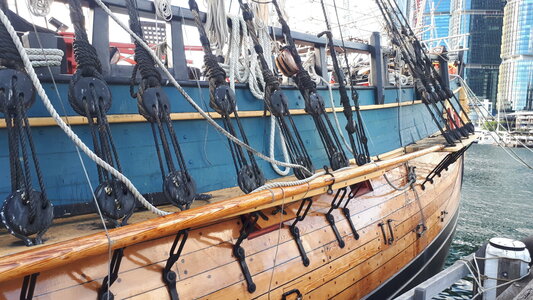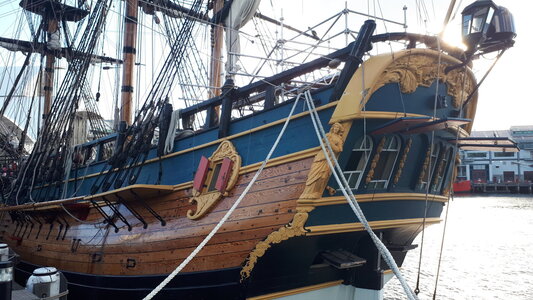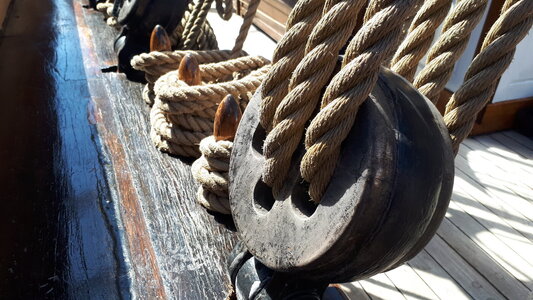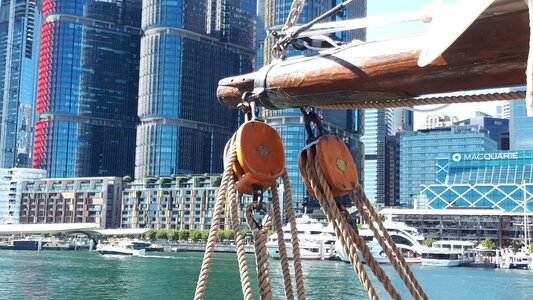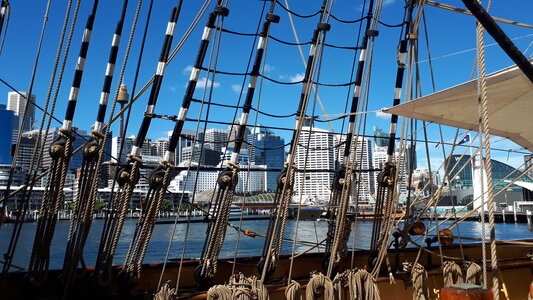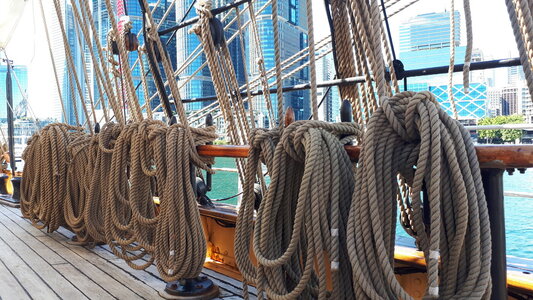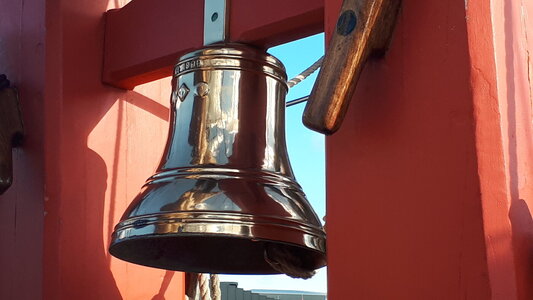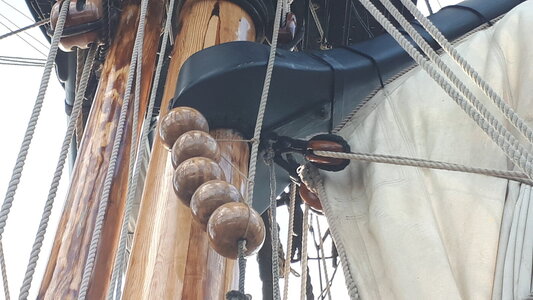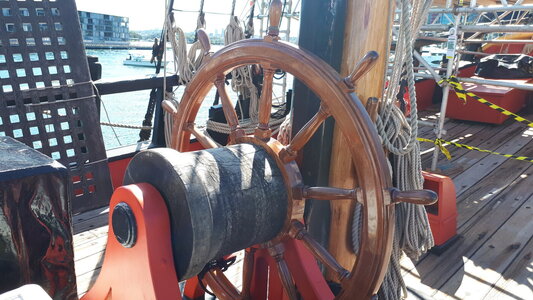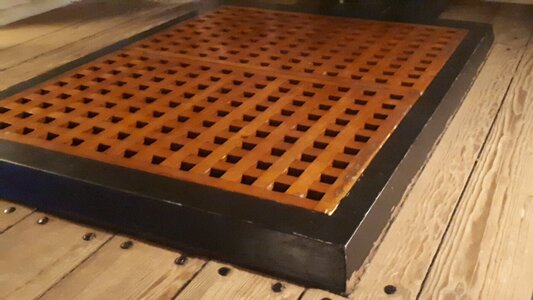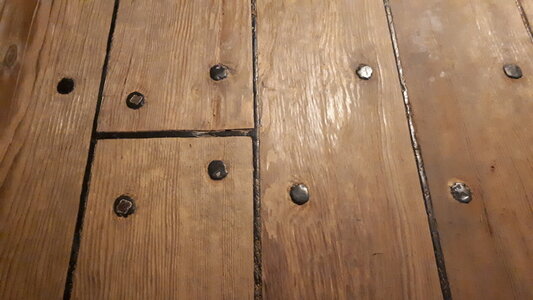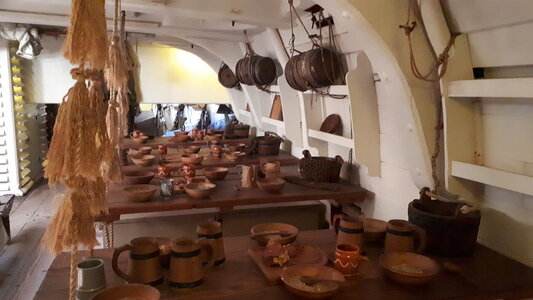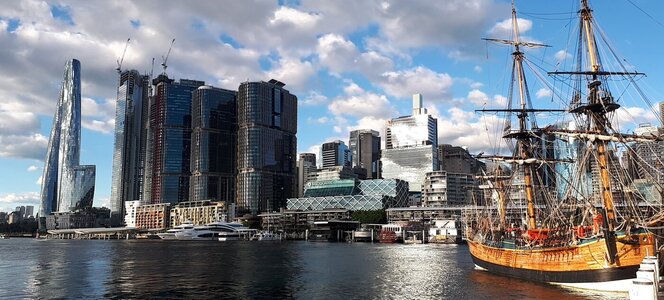Shipping the rudder on HMS Fly is an interesting exercise in spacing and alignment. Or rather, in my case, an exercise in rack-of-eye guesstimates and a lets-just-hope-for-the-best outcome  . The pintle straps on the rudder block run parallel to each other and also a few degrees off horizontal in relationship to the keel. A bevel is shaped on the rudder edge to enable some degree of movement when installed against the stern post.
. The pintle straps on the rudder block run parallel to each other and also a few degrees off horizontal in relationship to the keel. A bevel is shaped on the rudder edge to enable some degree of movement when installed against the stern post.

The gudgeon straps straddle the stern post and are installed at a slight angle to render them parallel to the pintle straps. Like the pintles, the gudgeons are also blackened and made to look iron-like, noting that the lower three pintle and gudgeon pairings would have been covered in a sea of white had I painted below the waterline.

The litmus test is of course when you guide the pintle pins into the gudgeon eyes and see how it all hangs together. The aim I believe is to ship the rudder as close as possible to the stern post while allowing room for some degree of rotation. The bevel did make a difference in this regard. Once hung, the rudder sole is a smidgeon above the level of the false keel, which, to my understanding, is as it should be
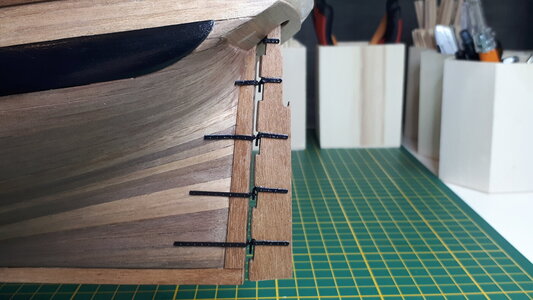
The top-most gudgeon is something of an enigma on HMS Fly. It disappears into the darkmost depths of the stern counter and competes for space with the key-hole opening that the rudder passes through. I notice that some die-hards make room to install it, others simply omit it. I compromised with a half-job effort of installing the pintle but not the gudgeon
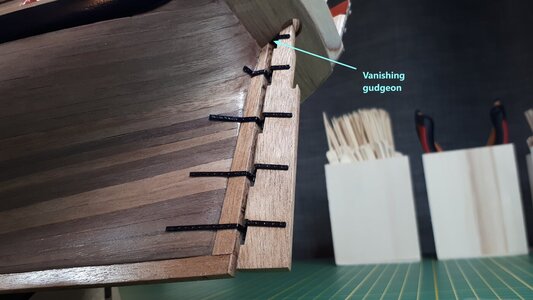

The gudgeon straps straddle the stern post and are installed at a slight angle to render them parallel to the pintle straps. Like the pintles, the gudgeons are also blackened and made to look iron-like, noting that the lower three pintle and gudgeon pairings would have been covered in a sea of white had I painted below the waterline.

The litmus test is of course when you guide the pintle pins into the gudgeon eyes and see how it all hangs together. The aim I believe is to ship the rudder as close as possible to the stern post while allowing room for some degree of rotation. The bevel did make a difference in this regard. Once hung, the rudder sole is a smidgeon above the level of the false keel, which, to my understanding, is as it should be

The top-most gudgeon is something of an enigma on HMS Fly. It disappears into the darkmost depths of the stern counter and competes for space with the key-hole opening that the rudder passes through. I notice that some die-hards make room to install it, others simply omit it. I compromised with a half-job effort of installing the pintle but not the gudgeon

Last edited:








